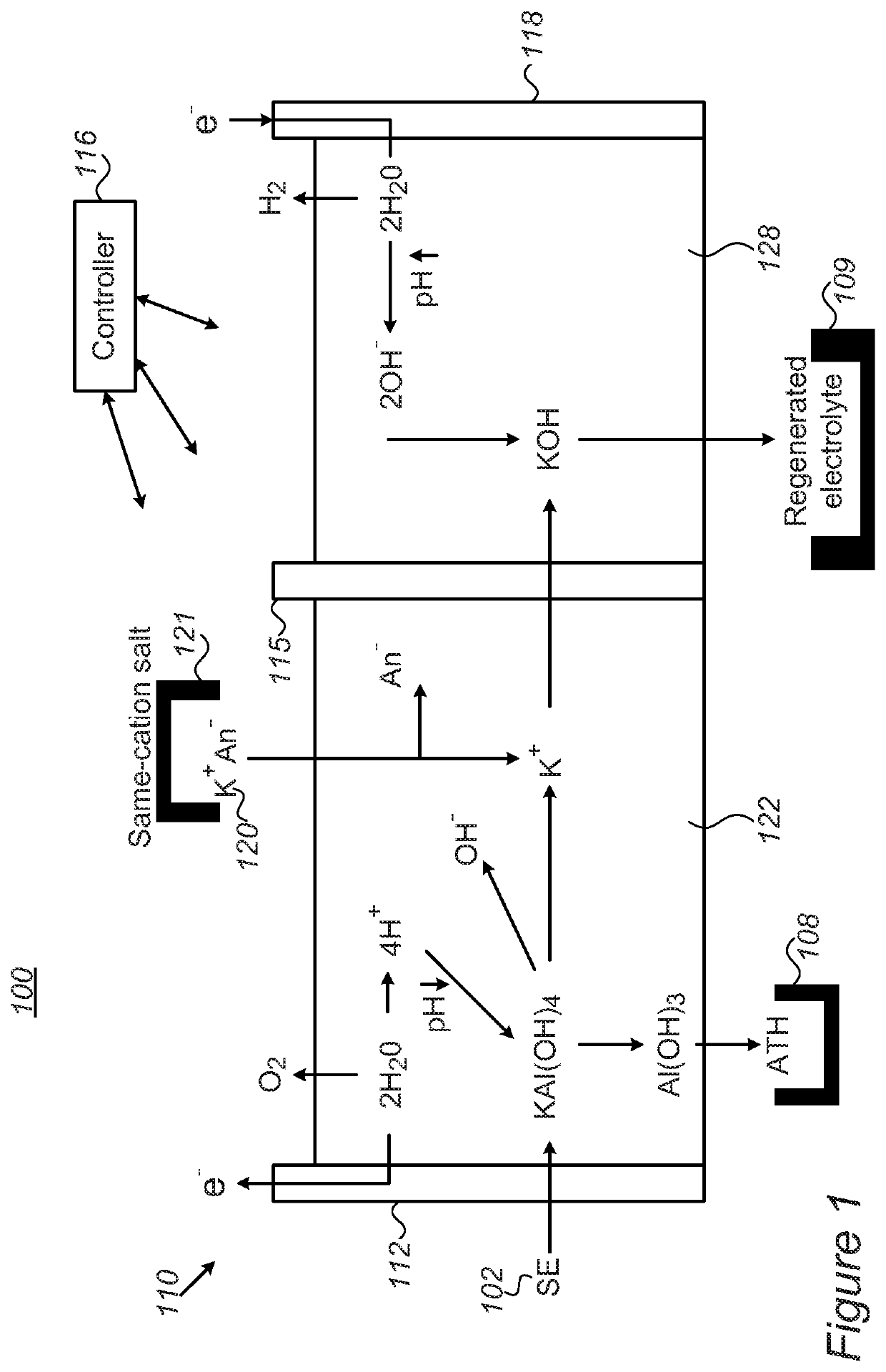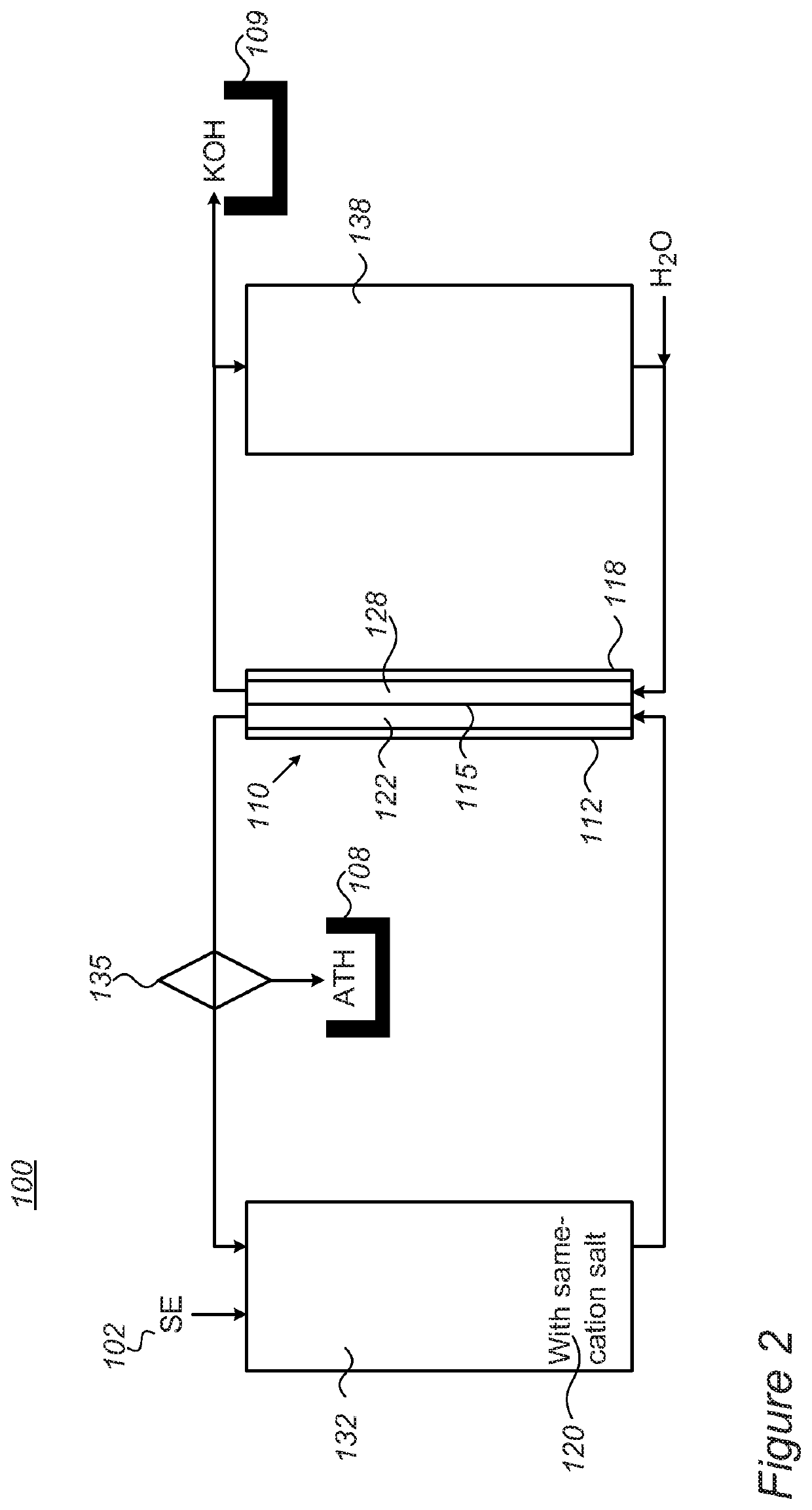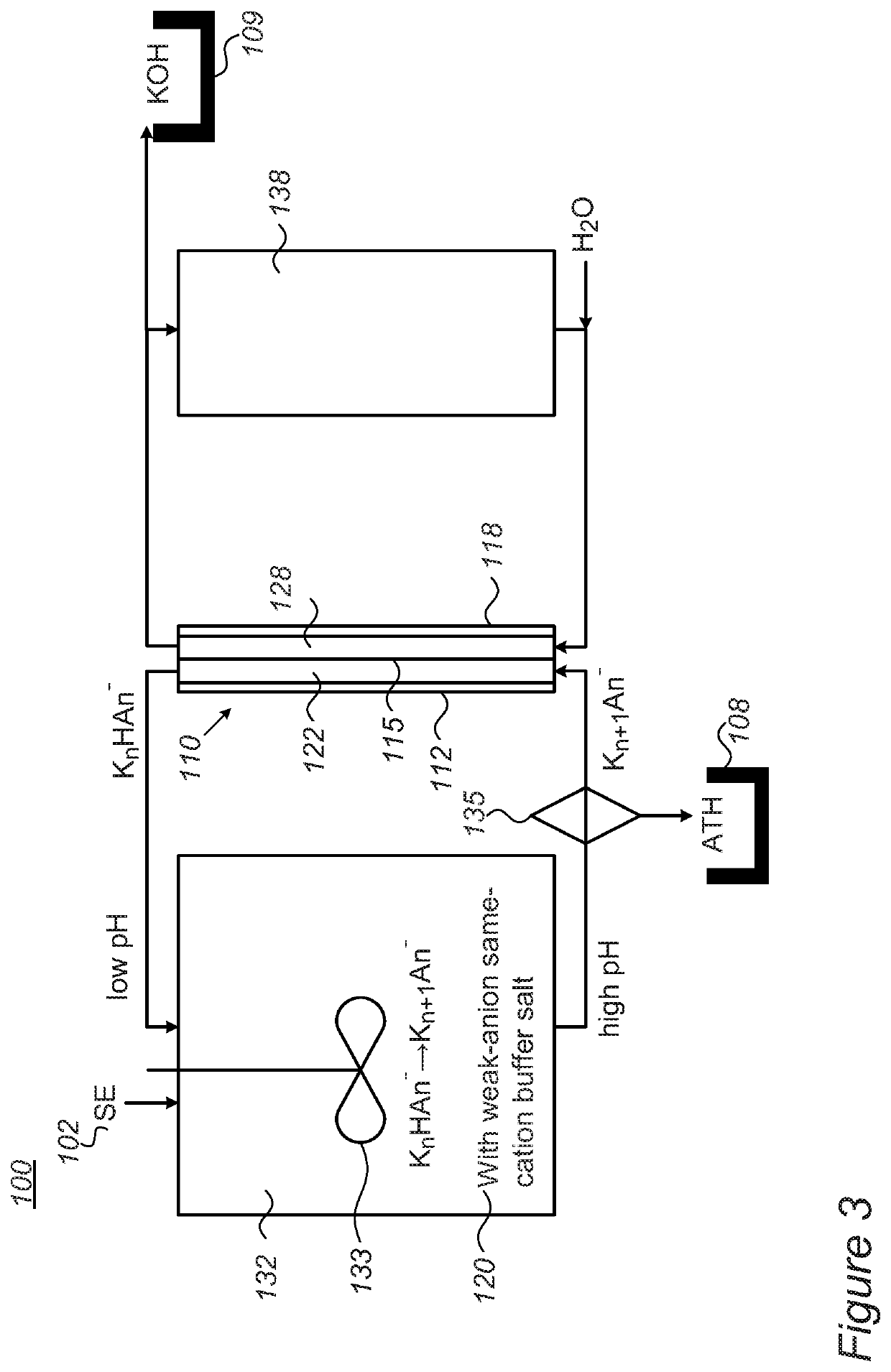Alkaline electrolyte regeneration
a technology of alkaline electrolyte and electrolyte, which is applied in the direction of secondary cell servicing/maintenance, maintenance/service of primary cells, and final product manufacturing, etc., can solve the problems of requiring the replacement of electrolyte solutions and lowering the efficiency of metal-air power sources
- Summary
- Abstract
- Description
- Claims
- Application Information
AI Technical Summary
Benefits of technology
Problems solved by technology
Method used
Image
Examples
example 1
t-Up
[0062]The system contains two compartments (made from PMMA, one for anolyte and one for catholyte, 2.5 L each. The size of each tank is 10×10×16 cm and a membrane separates the two compartments). Peristaltic pumps (Hontile Industrial Co. LTD) enable the circulation of electrolyte through the electrolysis membrane cell. The electrolysis cell is connected to a power source (Mancon Hcs 3042) where the voltage / current is computer recorded and the pH at the anolyte compartment is consistently monitored as well.
[0063]A separate beaker with 100 ml of filtered spent electrolyte (SE) is placed adjacent the anolyte compartment. The spent electrolyte composition is as followed—108 g / 1 KOH, 857 g / 1 KAl(OH)4 and 500 g / 1 H2O. The SE is dripped into the anolyte with the aid of peristaltic pump as needed.
[0064]The anolyte compartment was filled with 1500 ml of 2.5M K2CO3 (5N, Sigma Aldrich>98%) solution (pH˜12.6) and the catholyte compartment was filled with 1500 ml of 20% KOH solution (w / w, ˜5...
example 2
[0066]Nickel plate of 99.6% purity serves as an anode, the cathode is an air cathode produced by Phinergy™. The membrane is a commercial N551WX Nafion membrane. Zinc wires wrapped in Teflon sleeves are placed adjacent to both sides of the membrane. The potential of the anode and the cathode (with respect to Zn / ZnO) is consistently recorded.
example 3
Parameters and Experiment Conditions I
[0067]The cell was operated under constant current of 100 mA / cm2 (normalized to membrane surface area) at room temperature. At first the anolyte pH was adjusted into lower values (˜10.5) prior to SE addition. Addition of SE was manually adjusted to maintain pH between 9-10.5.
[0068]The parameters that were evaluated in this experiment were: Potentials (vs. Ref. electrode) of the anode and cathode; iR drop caused by the membrane (and by solution resistance); Caustic current efficiencies (CCE); and Water transport upon potential application (electro-osmotic drag coefficient-in ml / mol K+ or mol / mol K+).
[0069]In a further experiment, both with a static electrolysis membrane cell and the system described above, we were able to demonstrate 100% CCE. Moreover, SE was dripped into a portion taken from the anolyte compartment separately (i.e. not during potential application or the anolyte compartment), and the outcome ATH was analyzed by DLS to give part...
PUM
 Login to View More
Login to View More Abstract
Description
Claims
Application Information
 Login to View More
Login to View More - R&D
- Intellectual Property
- Life Sciences
- Materials
- Tech Scout
- Unparalleled Data Quality
- Higher Quality Content
- 60% Fewer Hallucinations
Browse by: Latest US Patents, China's latest patents, Technical Efficacy Thesaurus, Application Domain, Technology Topic, Popular Technical Reports.
© 2025 PatSnap. All rights reserved.Legal|Privacy policy|Modern Slavery Act Transparency Statement|Sitemap|About US| Contact US: help@patsnap.com



